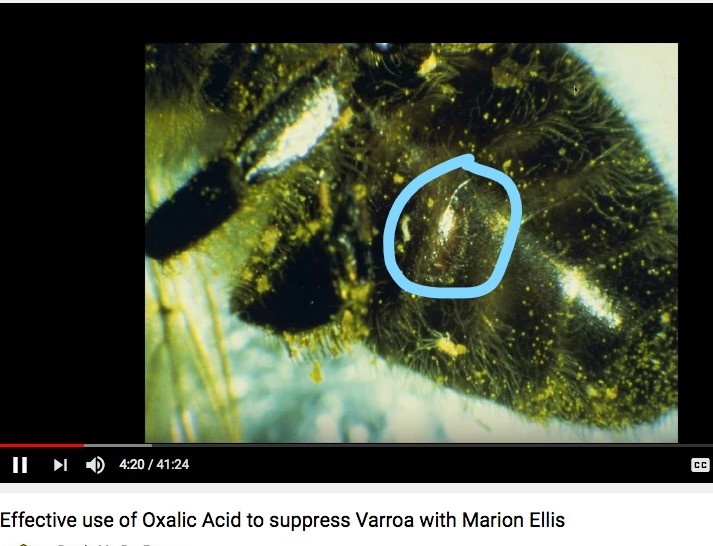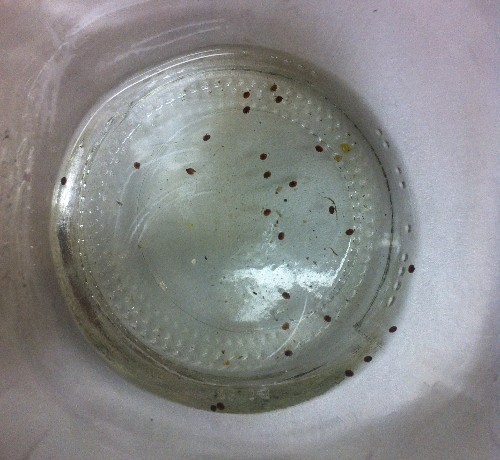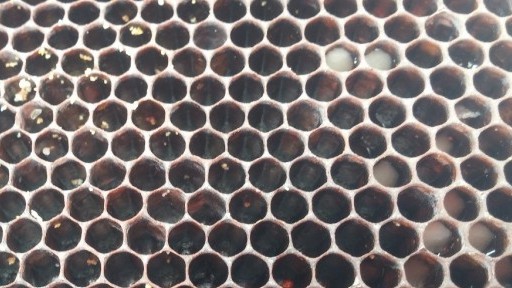
Know Thine Enemy: The Varroa Mite
This is where a varroa mite rides for most of its phoretic time: tucked into the plate on the belly
side of the abdomen. In this picture, taken from
a talk
given by Dr. Marion Ellis, the mite is tucked under the abdominal segment, or "belly" of the bee.
If we see a mite on the back of the bee, it means all the good spots are taken.
Check out this pdf for a local's guide (for those in OH,
and those with Winter) to managing Varroa from Dr. Dick Cryberg, a successful Northeast Ohio beekeeper.

Anyone who has lost a hive over winter, do these 2 simple steps:
1. Scoop up 1/2 cup of dead bees, and do an alcohol wash on them.
If you count more than 15 in 300 bees, then there was a high enough mite load to kill a hive in time.
If you count more than 30 in 300 bees, then the hive died of mites. But where did they come from?
Imported when your hive went robbing, or home-grown? To decide that, do step 2...

2. Check the ROOF of the central brood comb for mite frass.
Mite frass is mite poop. The above comb (pic courtesy
of Bee Informed Partnership) is tipped
so we can see into the roof of the cells. The tiny white dots are mite frass, deposited when the mite successfully
reproduces.
The solid white patches are crystallized honey that re-liquified.
If you see this much mite frass in a comb from a dead hive, then their mites were home-grown.
This means mites reproduced in the hive over enough time to overrun the colony.

Now that you're aware of where the mite hangs out on the bees, and what it's calling card looks like, it's time to
understand why it's a threat to your bees.
Mites Kill thanks to Math.